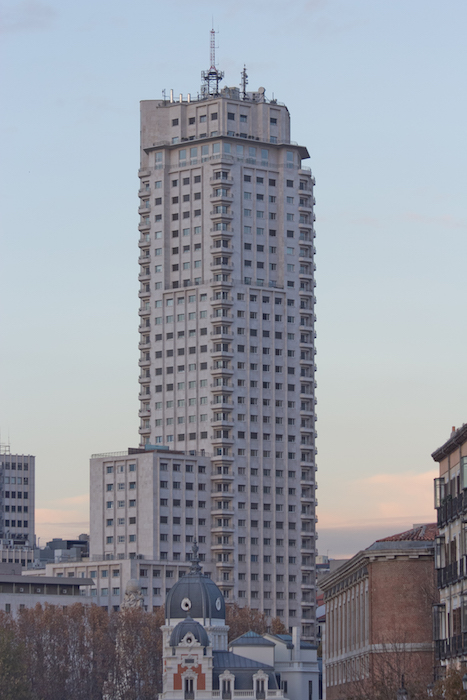“1957 in Spanish” and the Torre de Madrid?
 For a few months now we have been baffled why certain search dictionary terms are on top of our site's Search traffic.
For a few months now we have been baffled why certain search dictionary terms are on top of our site's Search traffic.
For several weeks now, 1957 in Spanish (mil novecientos cincuenta y siete) has been on top and we can't figure out why. Obviously, one reason is the fact that our Spanish dictionary entry for "in 1957" has a top position in a Google Search.
However, it does not explain WHY people are looking for this term in a Spanish translation. It's a puzzle!
La Torre de Madrid
In Gamesforlanguage's Spanish 1 course, our traveler David learns that the Torre de Madrid (Picture by Carlos Delgaso; CC-BY-SA) was completed in 1957.
Even now it's still one of the tallest buildings in Madrid. At the time, it actually was the largest concrete building in the world. According to this Wiki entry, the tower also appeared in numerous Spanish movies released in the 1960s, as well as in the 1984 movie The Hit.
As we can't imagine that OUR users are the ones searching for the translation, we can only speculate that people are looking for other events that happened in 1957. A quick Google search for “events in Spanish speaking countries in 1957” surfaces these possibilities:
Seve Ballesteros and Gloria Estefan
Disregarding the first two entries - the 1957 movie “The Pride and the Passion” and the Wiki event listing of 1957 - here are the ones that follow:
Both the late Spanish golfer Seve Ballesteros and Gloria Estefan, a well-known singer of the band Miami Sound Machine, were born in 1957. A possible, but not very probable explanation for why people are searching for 1957 in Spanish.
Diego Rivera and The Treaty of Rome
Maybe the life of the famous Mexican painter and muralist Diego Rivera (1886-1957) who appears as the next Google entry, has art students look up the year for a term paper. Or, political science students are researching the Treaty of Rome, which gave birth to the European Union and was signed in 1957. In either case, it seems more likely that the translation of the year is required for a speech or an oral report, and students are checking on the pronunciation.
Asian Flu
Britannica.com reports that “the 1957 Asian flu was the second major influenza pandemic to occur in the 20th century; it followed the influenza pandemic of 1918-19 (also know as the Spanish flu) and preceded the Hong Kong flu pandemic of 1968."
Maybe the recent Ebola scare has people looking up such events, as they need to talk about them in training and explanations. That would explain why the Search Traffic for the Spanish translation and pronunciation of 1957 has been increasing since the beginning of October.
Other Reasons?
Many other events happened in 1957 - including the launch of the Russian Sputnik - and one or more of them are causing people to look up the Spanish translation for 1957.
What do you think? We are inviting you readers to share your thoughts: Just maybe, one of you has searched or is searching for 1957 in Spanish. We'd love to have you help solve this puzzle!
Write us your suggestions at Contact or enter your comments below.
